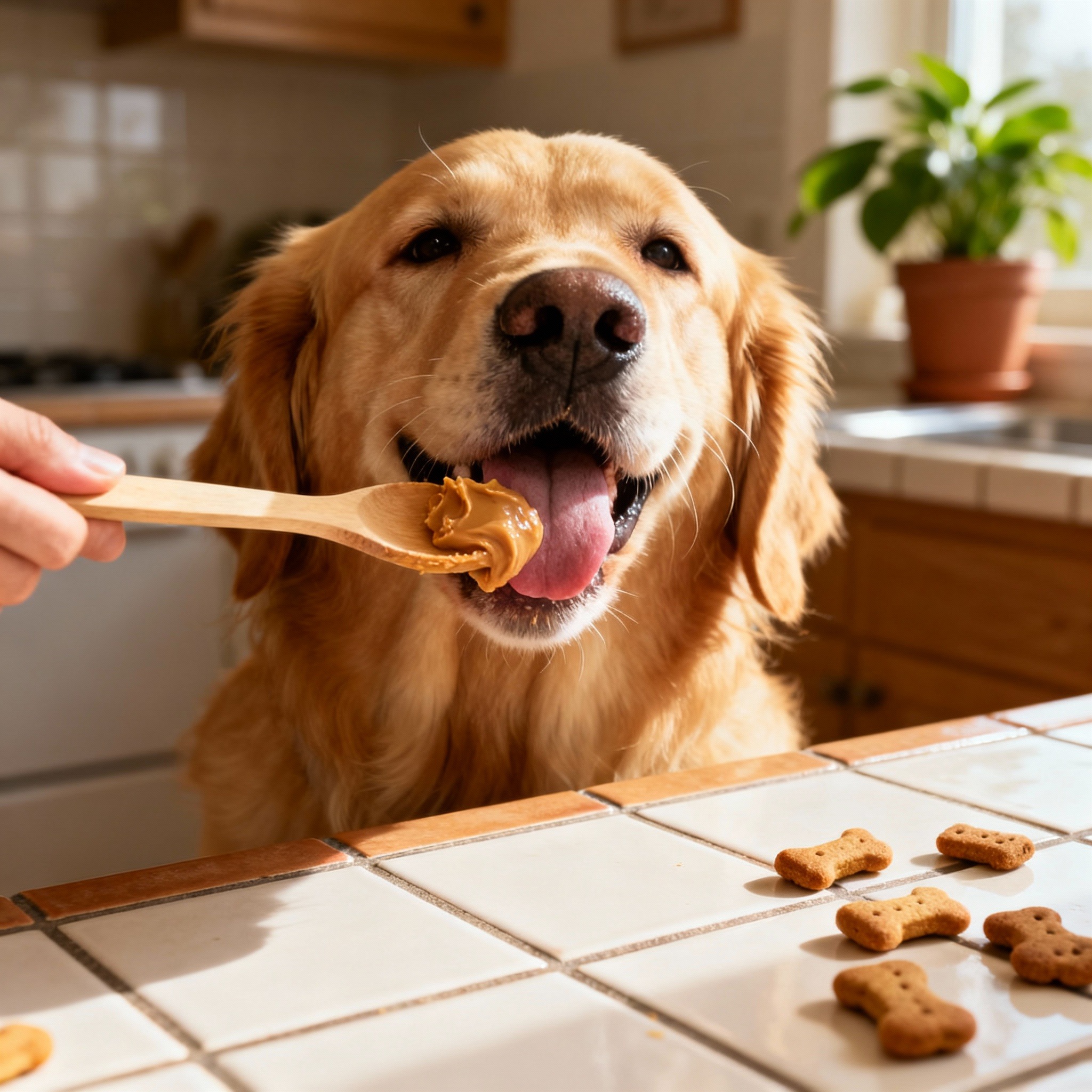You’ve probably stood in your kitchen, peanut butter jar in hand, with your dog staring up at you eagerly. It seems harmless—just a quick lick or a spoonful. But then comes the question that makes every responsible pet parent pause: is Skippy peanut butter safe for dogs?
This single question unlocks a bigger conversation about how everyday foods can affect canine health. So, let’s dig into what’s behind that blue‑lid jar, what to avoid, and how to make smarter treat choices for your beloved pup.
The Rise of Peanut Butter as a Dog Treat
Peanut butter has become one of the most popular treats among dog owners worldwide. It’s protein‑packed, easy to use, and dogs can’t resist it. Whether you’re stuffing a Kong toy, masking medicine, or rewarding good behavior, peanut butter provides both motivation and joy.
However, not all peanut butter brands are created same. Some contain additives that can harm dogs or upset their stomachs. Since Skippy is among the most common brands found in homes, it’s crucial to evaluate its safety before adding it to your dog’s treat list.
Breaking Down the Ingredients
To know whether a brand is safe, you must examine its ingredients. Most peanut butter includes roasted peanuts, oils, some sweeteners, and salt—but specific combinations and types define its safety.
Here’s what typically goes into Skippy peanut butter:
- Roasted peanuts
- Sugar
- Hydrogenated vegetable oil (soybean, cottonseed, and rapeseed)
- Salt
While sugar and oil help create that creamy texture we love, not all are dog‑friendly. Hydrogenated oils contain trans fats, and sugar can lead to weight gain or diabetes in dogs. Still, note that Skippy does not contain xylitol—the sweetener that’s deadly to dogs in many “sugar‑free” spreads.
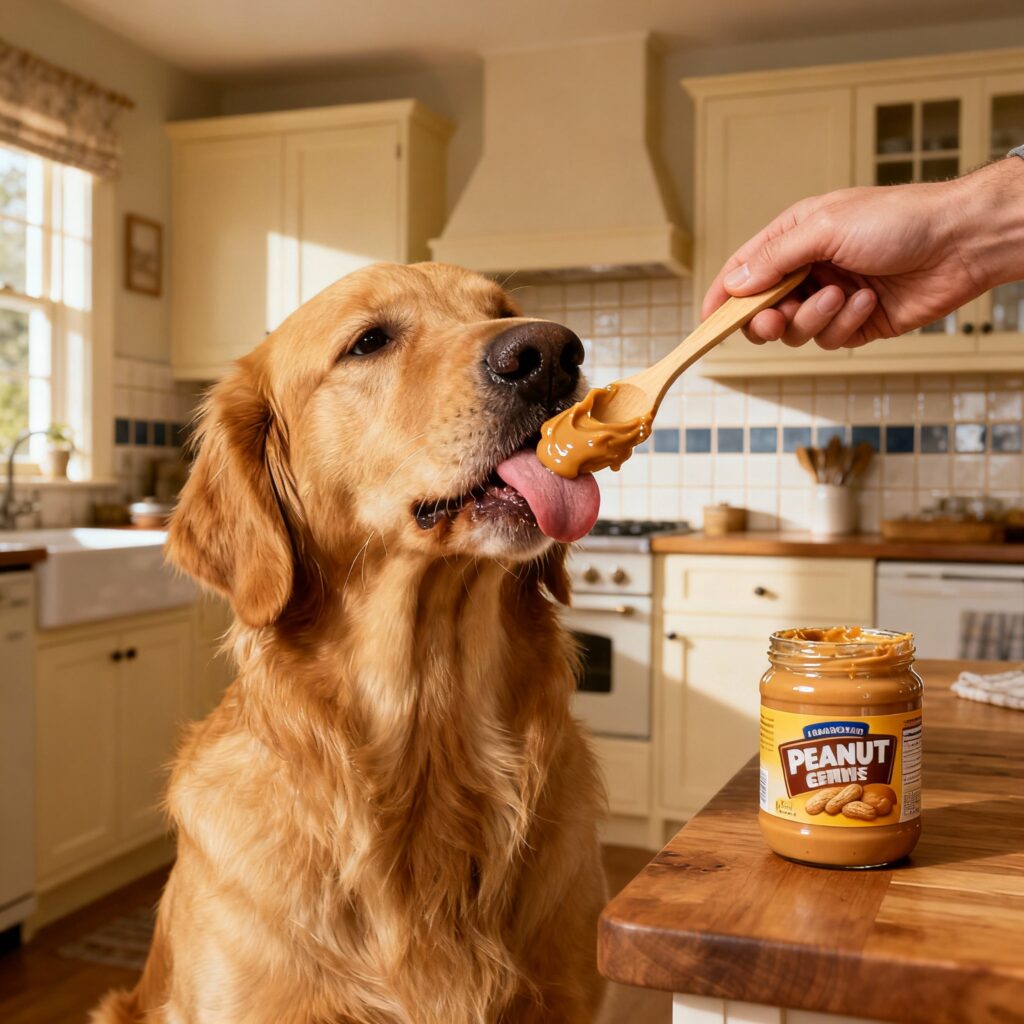
The Xylitol Factor
Before deciding is Skippy peanut butter safe for dogs, you must understand xylitol, the most dangerous ingredient for dogs in human foods. Even a tiny amount can trigger life‑threatening hypoglycemia (low blood sugar) or liver failure.
The good news is that traditional Skippy varieties generally don’t include xylitol. Still, always double‑check labels, especially for versions labeled “no added sugar,” “light,” or “low carb.” Manufacturers occasionally update formulas, and missing such changes could be fatal for your dog.
Key Ingredient Concerns in Skippy Peanut Butter
Even without xylitol, Skippy has a few red flags when it comes to nutrition:
- Added Sugar: Dogs don’t need sugar. Over time it contributes to dental decay, inflammation, and obesity.
- Hydrogenated Oils: These increase shelf life but are linked to unhealthy fat buildup.
- High Sodium Levels: Salt in excess can lead to dehydration or strain the kidneys, especially in small dogs.
So, while Skippy isn’t toxic, it’s not the ideal everyday peanut butter for dogs either.
Should You Ever Give Skippy Peanut Butter to Dogs?
If you’re wondering whether your pup can enjoy Skippy occasionally, the answer is a cautious yes—but sparingly. A few licks during nail‑trimming time or a small dollop to hide medicine should be fine for most healthy dogs.
Safe guidelines:
- Use ½ teaspoon for small dogs (under 20 lbs).
- Give 1 teaspoon for medium dogs (20–50 lbs).
- Offer 1 tablespoon for large dogs (50+ lbs).
Never use it daily; treat it as an occasional indulgence.
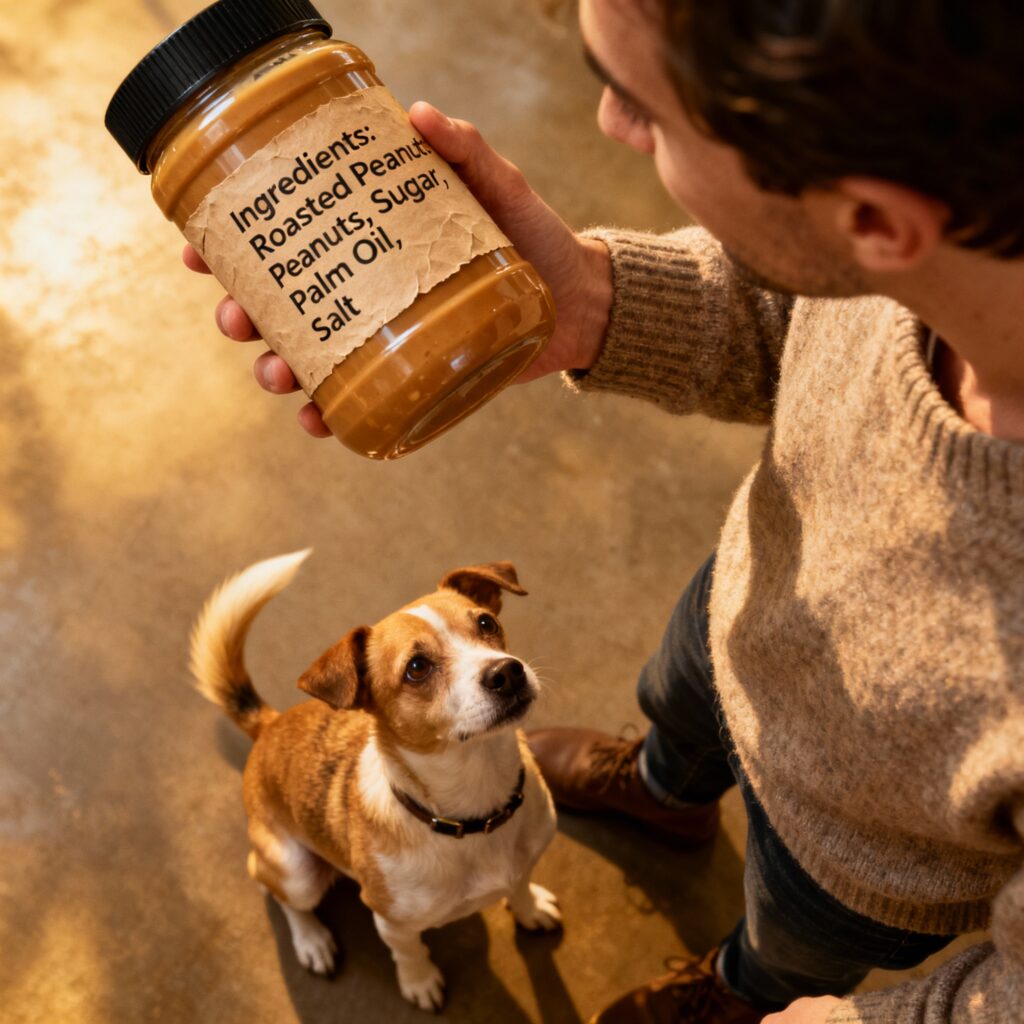
Comparing Skippy with Natural Peanut Butter Brands
| Feature | Skippy Peanut Butter | Natural Peanut Butter |
|---|---|---|
| Sugar content | Contains added sugar | None |
| Oils | Hydrogenated vegetable oils | Natural peanut oils |
| Sodium | Moderate to high | Very low |
| Xylitol | None (check for updates) | None |
| Fat quality | Processed trans fats | Healthy monounsaturated fats |
| Dog safety | Acceptable in moderation | Safest choice for regular treats |
This comparison shows that while Skippy won’t harm your dog immediately, the natural version wins on overall health benefits.
The Digestive Impact of Peanut Butter on Dogs
Canine digestive systems aren’t built for high sugar or saturated fats. Regular Skippy consumption can slow digestion and, in some cases, cause bloating, vomiting, or soft stools.
For dogs with underlying issues—like pancreatitis or sensitive stomachs—the fat content in commercial peanut butter can worsen symptoms. Always monitor how your dog reacts after trying new foods, even common ones like peanut butter.
Homemade Peanut Butter: The Safe DIY Alternative
If you love giving your dog peanut butter, making it yourself might be the best solution. You only need unsalted, roasted peanuts and a food processor. Blend them until smooth, and you’ll have homemade, preservative‑free peanut butter your dog can enjoy guilt‑free.
Optional safe add‑ins:
- Flaxseed powder for omega‑3s
- Tiny pinch of cinnamon (not nutmeg)
- Chia seeds for fiber
No sugar. No salt. No xylitol. Just natural taste and nutrition.
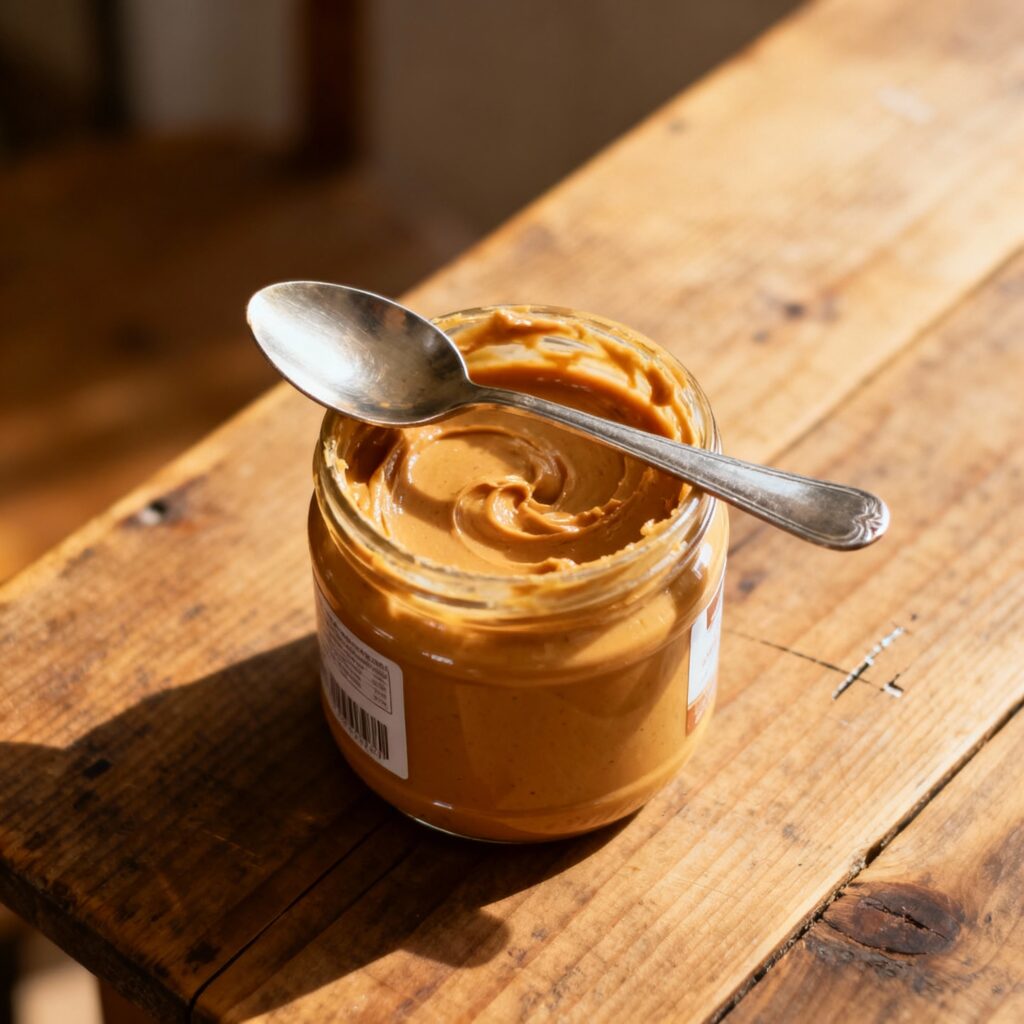
How Much Peanut Butter is Too Much?
Even the healthiest version shouldn’t become a daily habit. High calories can easily tip your dog’s balance. For example, one tablespoon has nearly 100 calories—roughly 10% of what a small dog burns in an entire day.
Your best approach is moderation: a treat once or twice weekly keeps it fun without altering diet or weight.
You May Like – When You’re Scared of Losing Your Dog: How to Help Your Senior Dog Overcome Fear
Allergies and Peanut Butter
Some dogs, though rare, are allergic to peanuts. Symptoms include sneezing, itching, or visible bumps around the mouth. If you notice such reactions, stop peanut butter immediately and consult your vet.
Always introduce new foods slowly rather than giving a whole serving at once.
Healthy Peanut Butter Brands for Dogs
If you prefer not to make peanut butter at home, several brands cater to health‑conscious pet owners:
- Crazy Richard’s 100% Peanut Butter
- Smucker’s Natural Unsalted Peanut Butter
- Teddie All Natural
- Bark Bistro Buddy Butter (dog‑specific)
These contain no added sugar or preservatives and are often labeled as dog‑friendly choices.
Safe Ways to Use Peanut Butter
Peanut butter’s sticky, delicious texture makes it ideal for mental stimulation and training purposes. Here are safe and fun ways to use it:
- Smear a teaspoon inside a Kong toy for playtime.
- Use as a distraction treat during grooming or vet visits.
- Mix with mashed banana and freeze as a cool summer snack.
- Spread a tiny layer on lick mats for anxiety‑relief routines.
These activities combine taste with engagement, strengthening your bond with your dog.
Common Peanut Butter Myths
Myth 1: “All peanut butter brands are safe for dogs.”
Fact: Some brands contain xylitol or excess sodium that can harm your dog.
Myth 2: “If my dog doesn’t get sick right away, it’s fine.”
Fact: Sugar and trans fats lead to slow, cumulative damage.
Myth 3: “Skippy is safe because it’s a big brand.”
Fact: Big brands often add preservatives and sugars for flavor, which dogs don’t need.
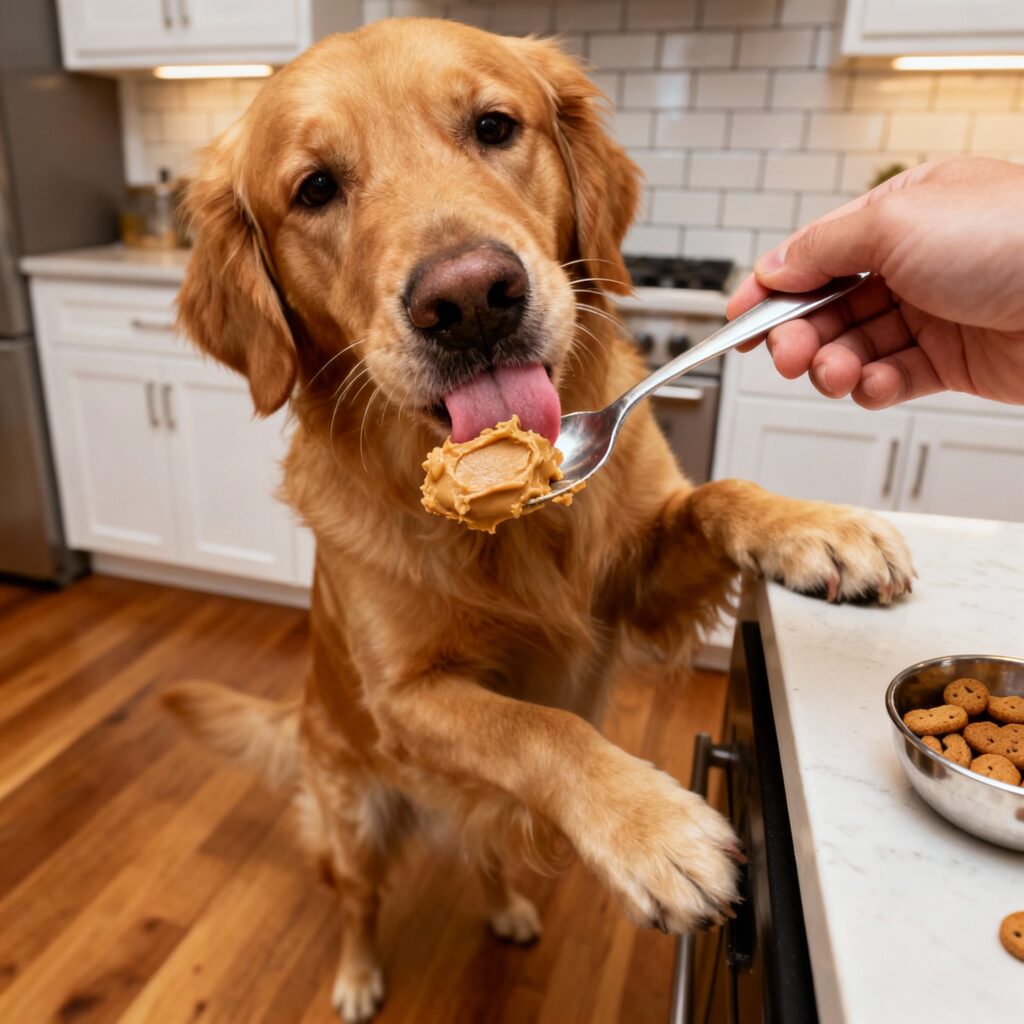
What Veterinarians Say
Veterinarians generally agree that small doses of regular peanut butter—Skippy included—are safe, provided there’s no xylitol and the dog has no pre‑existing health issues.
They emphasize label reading and portion control. For dogs on special diets or those prone to pancreatitis, vets usually recommend skipping processed brands altogether and choosing limited‑ingredient alternatives instead.
Psychological Perks of Peanut Butter for Dogs
Beyond nutrition, peanut butter offers emotional benefits. By using it during positive training or grooming, you reduce stress and encourage trust. Dogs quickly learn to associate peanut butter with happy experiences, making cooperation easier for you and enjoyable for them.
However, moderation remains key. Overuse might shift focus from the bonding to the reward, and excess calories could undermine your dog’s well‑being.
Signs of Overfeeding Peanut Butter
If you suspect you’ve gone a little overboard with peanut butter treats, watch for these signs:
- Diarrhea or soft stools
- Vomiting
- Noticeable weight gain
- Fatigue
- Increased thirst (due to sodium)
- Refusal to eat regular meals
If any symptoms persist for more than a day, contact your vet to rule out pancreatitis or other complications.
Balancing Treats with a Healthy Diet
Peanut butter is a treat, not a meal replacement. Your dog’s nutrition should come primarily from high‑quality, protein‑rich dog food. Fruits like blueberries or vegetables like carrots make much better daily snacks.
Think of peanut butter as dessert—a small indulgence that brightens your dog’s day but doesn’t dominate it.
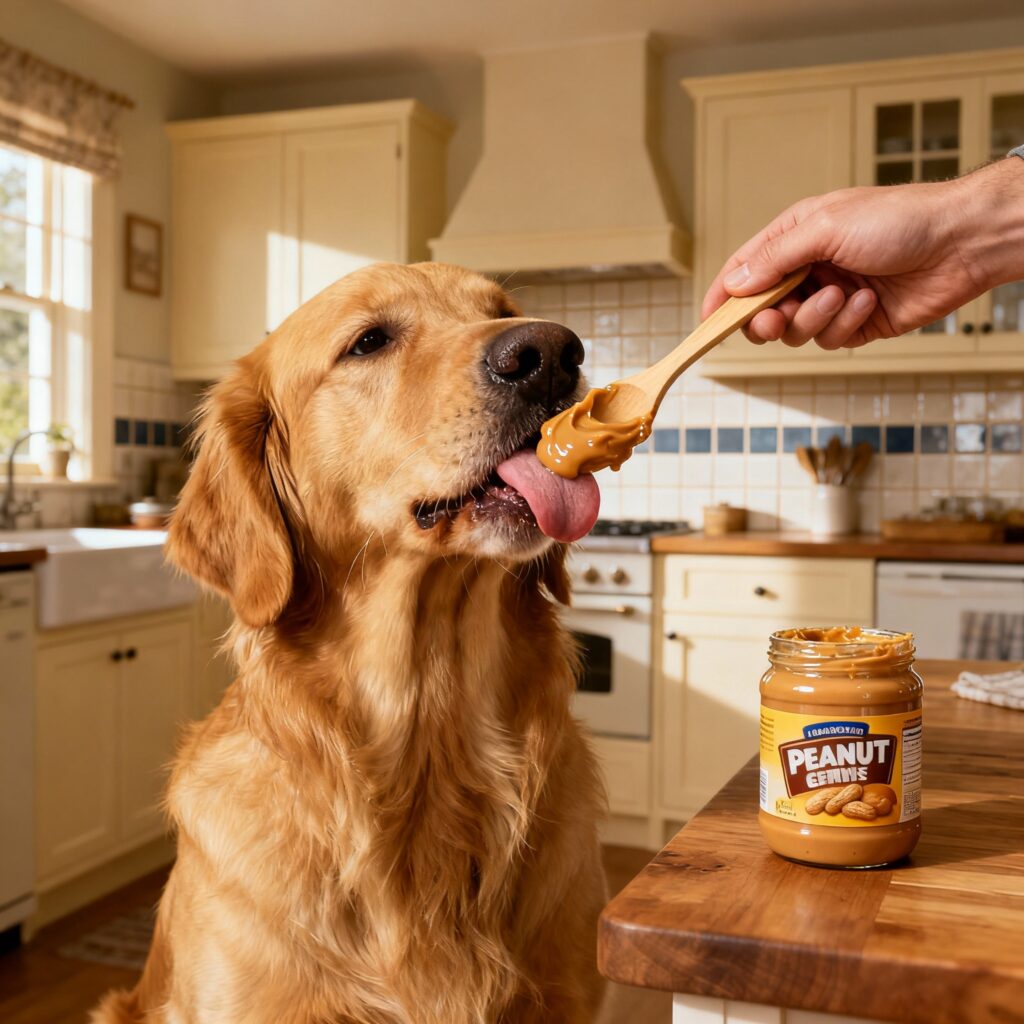
Making Smarter Peanut Butter Choices
Now that you understand the ingredients and risks, here’s how to make your peanut butter routine safer:
- Always read ingredient labels before each purchase.
- Avoid any brand mentioning xylitol, artificial sweeteners, or flavoring.
- Choose natural, unsalted peanut butter if available.
- Limit serving size and frequency.
- Store in a cool, dry place and check expiration dates.
Following these steps keeps your dog safe while maintaining that joyful snack moment.
Can Puppies Eat Skippy Peanut Butter?
You might wonder if it’s okay to start young. Puppies can have a small dab of Skippy on occasion—but their digestive systems are still developing, so smaller portions are essential. Stick to a rare, pea‑sized amount once in a while, primarily to encourage training or socialization. Always supervise and check for allergic reactions.
The Bottom Line: Is Skippy Peanut Butter Safe for Dogs?
After exploring every angle, here’s the straightforward verdict: Skippy peanut butter is safe for dogs in very small, occasional servings, provided it is xylitol‑free and your dog isn’t allergic or overweight.
That said, it’s far from the healthiest choice due to added sugars and hydrogenated oils. If you want your dog to enjoy peanut butter regularly, switch to a natural brand made solely from peanuts—or go homemade for peace of mind.
When you ask yourself is Skippy peanut butter safe for dogs, remember this: safety lies not only in the product but in portion control, label awareness, and your dog’s unique needs.
Quick Takeaway
- Most Skippy types are xylitol‑free but contain sugar and hydrogenated oils.
- Safe in moderation—avoid daily use.
- Best alternatives include natural or dog‑specific peanut butters.
- Always read labels and consult your vet for diet changes.
With careful consideration, you can continue sharing peanut butter moments safely—keeping your dog’s tail wagging and their health on track.
Share To Help